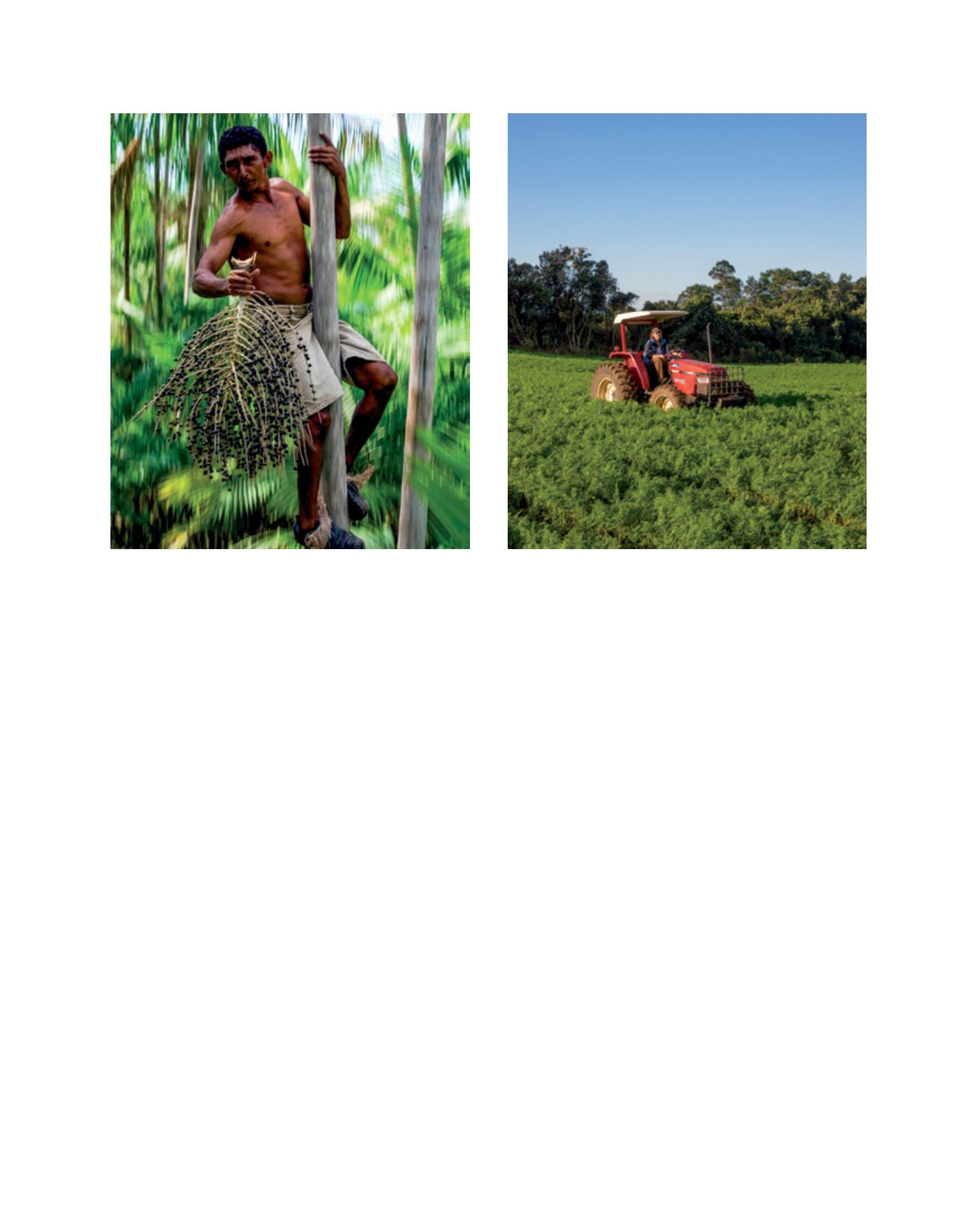

[
] 225
alone, PAA purchased food from 185,000 family farmers.
Similarly, since 2009, PNAE must by law purchase at least
30 per cent of its food directly from family farmers and
school menus, prepared by nutritionists, must reflect local
eating habits. By 2012, 80 per cent of public schools were
sourcing at least part of their food from family farms, and
half had reached the 30 per cent minimum target.
Environmental sustainability
Family farming provides environmental services for the conser-
vation of biodiversity, the sustainable management of natural
resources, and to limit or reduce greenhouse gas emissions.
Traditional peoples and communities – about 4.5 million
people in Brazil – play a vital role. More than 800,000
indigenous peoples in Brazil live on 13 per cent of the
national territory, with 250,000 in the Amazon rainforest.
In this context, the Sociobiodiversity Products Minimum
Price Guarantee Policy pays family farmers the difference
between government fixed prices and actual sale prices
for products such as açaí, Brazil-nut, babaçu palm almond
and rubber. The programme combines income generation
with non-harmful extraction of forest products, ultimately
preserving communities’ livelihoods and promoting
sustainable use of natural resources.
The Amazon rainforest represents over half of the plan-
et’s remaining rainforests and the greatest biodiversity in
tropical forest in the world, covering 5.5 million square
kilometres distributed among nine countries (60 per cent
in Brazil). The Brazilian Amazon is inhabited by 24 million
people. Secure land tenure is key in making it “worth more
standing than cut down” for those who depend on it for
their livelihoods. The Legal Land Program, coordinated by
MDA in partnership with states and municipalities, aims
to regularize rural and urban public lands to an estimated
150,000 families in 55 million hectares in the nine states
of the Amazon region. The legal certainty obtained through
land titles allows family farmers to access public policies
that combine income generation with sustainable manage-
ment of natural resources, and enhances accountability
mechanisms for landowners to fulfil their legal duty in
terms of preservation and respecting reserve ratios.
The overexploitation and degradation of natural resources
resulting from human activity and the increasing frequency
and intensity of extreme weather events are interconnected
and – as in the case of desertification and drought – mutu-
ally reinforcing. In 2013, Brazil’s north-east region faced
its most severe drought in 50 years, with more than 1,400
municipalities affected. The drought did not provoke mass
migration to the urban centres of the south-east and south,
as in the past. A comprehensive set of public policies of
coexistence with the semi-arid region proved crucial to the
adaptation of family farmers. In particular, MDA’s Harvest
Plan for the Semi-Arid Region 2013/14 included actions
such as the Harvest Guarantee insurance scheme, which
compensates family farmers who can prove the loss of at
least 50 per cent of expected production. The Cisterns
Program ensures water consumption for a family of five
for approximately eight months through a simple and inex-
pensive social technology to capture rainwater and store it
in a 16,000 litre reservoir. The Second Water Program uses
Originally launched as a credit scheme, the More Food Program
drove 61 per cent of Brazil’s tractor sales in January to May 2009
Traditional peoples and communities play a vital role in the conservation of
biodiversity and the sustainable management of natural resources
Image: Eduardo Aigner
Image: Albino Oliveira
D
eep
R
oots
















